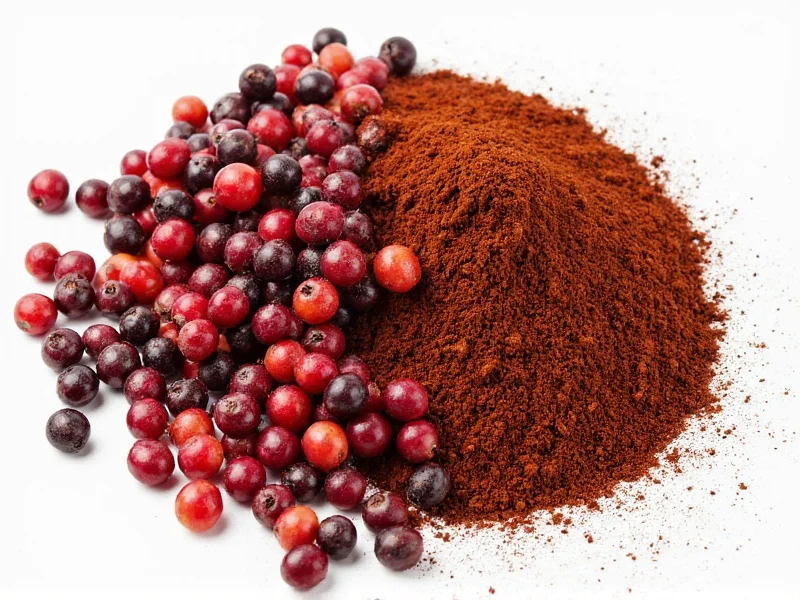Many home cooks wonder about the difference between allspice berries vs allspice, mistakenly believing they’re distinct spices. This confusion stems from the naming convention in culinary contexts. Allspice comes exclusively from the dried berries of the Pimenta dioica tree, native to the Caribbean and Central America. When recipes call for “allspice,” they’re referring to this single spice in either whole berry or ground form.
Understanding Allspice Terminology
The term “allspice” was coined by English settlers in Jamaica who noticed its flavor profile reminiscent of a blend of cinnamon, nutmeg, and cloves. Despite the name suggesting a spice mixture, allspice is actually a single ingredient. “Allspice berries” specifically denotes the whole, dried fruit, while “allspice” commonly refers to the ground version, though the term applies to both forms.
Botanical Background and Production
Allspice derives from the Pimenta dioica plant, an evergreen tree in the myrtle family. The berries are harvested when green and unripe, then sun-dried until they turn reddish-brown and develop their characteristic aroma. This drying process concentrates the essential oils responsible for allspice’s complex flavor profile.
| Characteristic | Allspice Berries (Whole) | Ground Allspice |
|---|---|---|
| Appearance | Small, round, dark brown berries (5-7mm diameter) | Medium-brown fine powder |
| Flavor Intensity | Milder when used whole; releases flavor slowly | More immediate, potent flavor release |
| Shelf Life | 2-3 years when properly stored | 6-12 months before flavor diminishes |
| Common Uses | Pickling, stews, mulled beverages, infusions | Baking, rubs, spice blends, quick-cooking dishes |
Culinary Applications: Whole Berries vs Ground
Chefs choose between whole allspice berries and ground allspice based on recipe requirements. Whole berries work best in slow-cooked dishes like jerk chicken, pickling solutions, and mulled wines, where they can infuse flavor gradually. Ground allspice delivers immediate flavor distribution, making it ideal for baking, spice rubs, and quick-cooking applications.
When substituting one form for another, remember that 6 whole allspice berries roughly equal 1 teaspoon of ground allspice. For optimal flavor, toast whole berries briefly before grinding them yourself rather than purchasing pre-ground spice.
Flavor Profile and Common Misconceptions
Allspice earned its name because early European explorers detected notes reminiscent of several spices in one. The complex flavor combines warm notes of clove, cinnamon, and nutmeg with subtle peppery undertones. This unique profile explains why many people mistakenly believe allspice is an actual blend of spices.
The misconception that “allspice berries” and “allspice” are different products persists because grocery stores often label the ground version simply as “allspice” while calling the whole form “allspice berries.” This labeling convention creates unnecessary confusion about allspice berries vs allspice when they’re fundamentally the same product in different physical forms.
Storage Recommendations for Maximum Freshness
To preserve allspice’s volatile oils and complex flavor profile, store both forms properly. Keep whole allspice berries in an airtight container away from light and heat, where they’ll maintain peak quality for 2-3 years. Ground allspice loses potency more quickly—use within 6-12 months for best results. For extended freshness, refrigerate both forms in opaque containers.
Regional Variations and Quality Indicators
Jamaican allspice berries are considered the gold standard due to the island’s ideal growing conditions, though allspice also comes from Mexico, Honduras, and other Caribbean nations. High-quality allspice berries feel heavy for their size, have a uniform dark brown color, and emit a strong, sweet aroma when crushed. Avoid berries that appear dusty or have a musty smell, as these indicate age or improper storage.
Substitutions When Allspice Is Unavailable
If you need an allspice substitute, combine 1/2 teaspoon ground cinnamon, 1/4 teaspoon ground nutmeg, and 1/4 teaspoon ground cloves for each teaspoon of allspice required. While this blend approximates allspice’s flavor, it lacks the distinctive peppery note of genuine allspice. For authentic Jamaican jerk seasoning or traditional mole sauces, however, nothing replicates true allspice’s unique profile.
Practical Usage Tips for Home Cooks
When working with whole allspice berries, remember they’re extremely hard and can damage teeth if bitten directly. Always remove them before serving dishes where they’ve been used as a flavoring agent. For even distribution in baked goods, grind berries fresh using a dedicated spice grinder or mortar and pestle. The essential oils in freshly ground allspice provide significantly more vibrant flavor than pre-ground versions.











 浙公网安备
33010002000092号
浙公网安备
33010002000092号 浙B2-20120091-4
浙B2-20120091-4